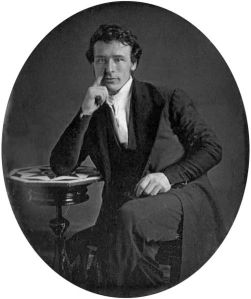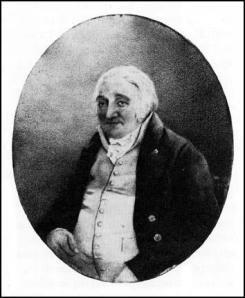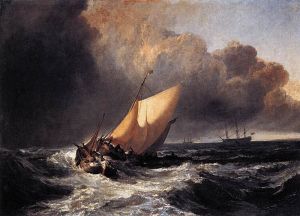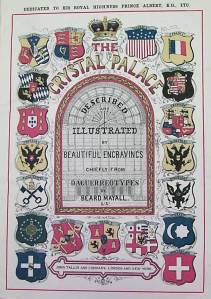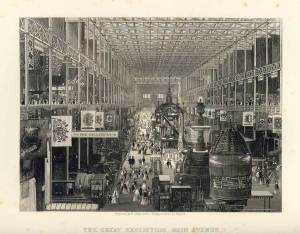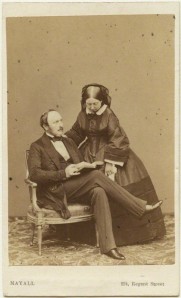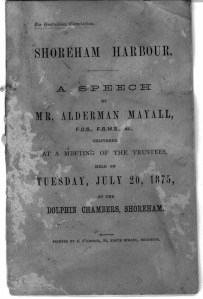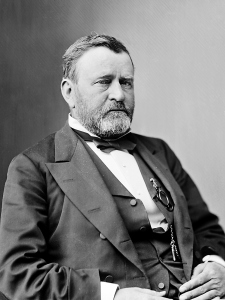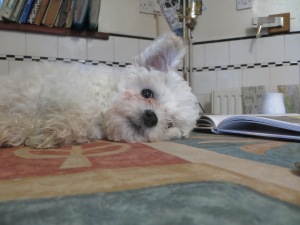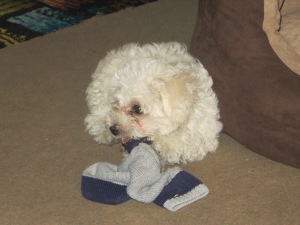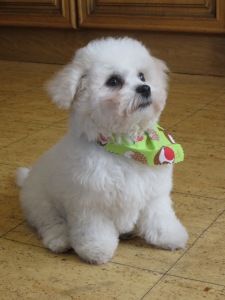THIRST FOR KNOWLEDGE IN OLD AGE.One of the most admirable things about Turner’s mind was, that it never grew old. It never froze and petrified into unchangeable fixity, but remained to the last thirsty for knowledge, and ready to grow as the world grew..One of the most interesting proofs of the perpetual growth of Turner’s mind is the following account of the interest he took in the science of optics and in the science of photography. It is kindly furnished to me by that eminent professor of the progressing and wonderful art, Mr. Mayall, of Regent-street:.
“Turner’s visits to my atelier were in 1847, ’48, and ’49. I took several admirable daguerreotype portraits of him, one of which was reading, a position rather favourable for him on account of his weak eyes and their being rather bloodshot. I recollect one of these portraits was presented to a lady who accompanied him. My first interviews with him were rather mysterious; he either did state, or at least led me to believe, that he was a Master in Chancery, and his subsequent visits and conversation rather confirmed this idea. At first he was very desirous of trying curious effects of light let in on the figure from a high position, and he himself sat for the studies. He was very much pleased with a figure-study I had just completed of ‘ This Mortal must put on Immortality;’ he wished to bring a lady to try something of the kind himself. This was in 1847; and I believe he did fix a day for that purpose. However, it happened to be a November fog, and I could not work. He stayed with me some three hours, talking about light and its curious effects on films of prepared silver. He expressed a wish to see the spectral image copied, and asked me if I had ever repeated Mrs. Somerville’s experiment of magnetizing a needle in the rays of the spectrum. I told him I had.
.
“I was not then aware that the inquisitive old man was Turner, the painter. At the same time, I was much impressed with his inquisitive disposition, and I carefully explained to him all I then knew of the operation of light on iodized silver plates. He came again and again, always with some new notion about light. He wished me to copy my views of Niagara then a novelty in London and inquired of me about the effect of the rainbow spanning the great falls. I was fortunate in having seized one of these fleeting shadows when I was there, and I showed it to him. He wished to buy the plate. At that time I was not very anxious to sell them. I told him I had made a copy for Sir John Herschel, and with that exception did not intend to part with a copy. He told me he should like to see Niagara, as it was the greatest wonder in nature; he was never tired of my descriptions of it. In short, he had come so often, and in such an unobtrusive manner, that he had come to be regarded by all my people as ‘ our Mr. Turner.’
.
.
“I recollected putting aside a rather curious head of him in profile, and, you may be sure, on the following morning after this interview I lost no time in looking up the portrait, which, I regret to say, one of my assistants had without my orders effaced. I am almost certain you will be able to trace some of the daguerreotypes of him, for I made at least four, for which he paid me; and some I rubbed out where we had tried the effect of a sharp, narrow cross light, in which some parts of the face were left in strong shadow.
.
“I need not add, that at that time I was a struggling artist, much devoted to improving my art, and had just bought a large lens in Paris, six inches in diameter. I let Turner look through it, and the expressions of surprise and admiration were such that I ought at once to have known him in his true character; however, he was very kind to me, and by some sort of inuendo he kept up his Mastership in Chancery so well, that I did not. He sent me many patrons. I used to hear about him almost daily. When somewhat desponding of my success one day, I told him London was too large for a man with slender means to get along. He sharply turned round and said, ‘No, no; you are sure to succeed; only wait. You are a young man yet. I began life with little, and you see I am now very comfortable.’ ‘ Yes,’ I replied; ‘ and if I were on the same side of Chancery you are, perhaps I might be comfortable also.’ I was at that time fighting the battle of the patent rights of the daguerreotype. He smiled and said, ‘ You’ll come out all right, never fear.’ My recollection now is, that he was very kind and affable to me, rather taciturn, but very observant and curious; he would never allow me to stop working when he came, but would loiter and watch me polish the plates and prepare them, and take much interest in the result of my labours.
.
“I recollect Mr. Spence, the naturalist, sitting to me, and was much struck at the time with the resemblance of the two heads. I mentioned this to Turner, and I showed him the portrait of Mr. Spence. Mr. Spence was stouter. Turner stooped very much, and always looked down; he had a trick of putting his hand into his coat-pocket, and of muttering to himself.
.
“Whatever others may have said of his parsimonious habits, I cannot recollect one act of his that would lead me to infer he was other than a liberal, kindhearted old gentleman.”
.
When Mr. Mayall, the photographer, whose fame is now European, was first known as a young struggling American photographer in a small shop in the Strand, the wonderful art was then uncertain in its results, and few there were who could at that time foresee the influence it would exercise over art. It was one day during that moral epidemic, the railway mania, when Mr. Hudson ruled England, and all the world, from the countess to the costermonger, knelt down and beat their heads on the pavement of Capelcourt, in passionate idolatry to the golden calf. The age of chivalry had indeed gone. At Mr. Mayall’s door there were hanging photographs intended to satirize the folly of the day. On one side there was a Stock Exchange man radiant, shares being at a premium; on the other, the same man in maniacal despair at the Great Bubbleton railway shares falling down to nothing. These pictures (almost the earliest attempts to make photography tell a story) attracted crowds, and among them Turner. So interested was he, indeed, that he came into the shop, and asked to see the gentleman who designed them. After this, he came so often, that an Abernethy chair was habitually placed for him, so that he might watch Mr. Mayall, without interrupting him at work. He took great interest in all effects of light, and repeatedly sat for his portrait in all sorts of Rembrandtic positions.
.
THE GREAT ARTISTS.
JOSEPH MALLORD WILLIAM TURNER
ROYAL ACADEMICIAN.
(Talking about Turner)
On October 22nd 1877, the President of the United States, Ulysees S Grant, while on his tour of Britain, spoke in response to an address by Mayor John Mayall of Brighton. (Taken from his papers).
.
‘Mr Mayor and Gentlemen: I have to rise here in answer to a toast that has made it embarrassing to me, by the very complimentary terms in which it has been proposed. But I can say to you all, gentlemen, that since my arrival in England, I have had the most agreeable receptions everywhere; and I enjoy yours most exceedingly. In a word, I will say that Brighton has advantages which very few places have, in consequence of its proximity to the greatest city in the world. There you can go and transact your business, and return in the evening. If I were an Englishman, I think I should select Brighton as a place where I should live, and I am very sure you could not meet a jollier and better people anywhere.’
.
